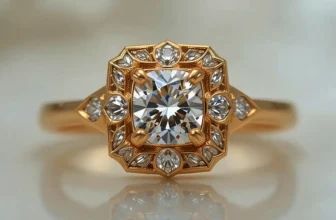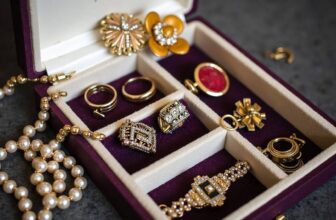What Makes an Art Deco Engagement Ring Special
Shopping Ads: Invest in Hidden Masterpiece: Rare Antique Oil Paintings For Sale. Limited Originals Available 💰😊 Are you looking for authentic hidden masterpiece? Explore old master antique oil paintings from the Renaissance and Baroque eras. From 16th-century portraits to 18th-century landscapes. Authenticity guaranteed, Old Master antique oil paintings for sale. Shop Now! 🎨 Renaissance And Baroque Art Old Master Portrait Paintings Landscape Antique PaintingsArt Deco engagement rings hold an enduring allure that continues to captivate couples and collectors alike. They are celebrated not just for their remarkable beauty, but also for the symbolism, craftsmanship, and cultural history they carry. Each Art Deco engagement ring is more than jewelry; it is a piece of wearable architecture, design, and romance. What truly makes these rings special lies in a combination of artistry, materials, geometry, heritage, and timeless individuality.
Below is a deep exploration of the many qualities that distinguish Art Deco engagement rings and explain why they remain so desirable nearly a century after their first appearance.
Precision and Geometry in Design
One of the defining aspects that make Art Deco engagement rings special is their strict emphasis on symmetry and geometric balance. These rings are built on clear lines, sharp angles, and ordered patterns that reflect the architectural trends of the early 20th century. Unlike the flowing, organic motifs of earlier styles, Art Deco rings prioritize rectangles, squares, triangles, and circles arranged in perfect harmony.
The deliberate use of geometry communicates order, strength, and modernity. For couples today, that precision translates into a timeless aesthetic that feels just as fresh as it did in the 1920s. Every cut and setting seems intentional, as if crafted to echo the skylines of New York or Paris during the rise of skyscrapers.
Bold Use of Contrasting Materials
Art Deco jewelers were pioneers in experimenting with striking contrasts. Platinum settings paired with white diamonds created a clean, icy brilliance, while onyx, jade, lapis lazuli, or enamel were introduced to add dramatic dark accents. The juxtaposition of light and dark not only emphasized the geometry of the designs but also gave the rings a theatrical, eye-catching presence.
This play of contrast makes Art Deco engagement rings stand out from other eras. The interplay between gemstones and metals elevates each piece into something more sculptural than decorative, allowing wearers to showcase a bold sense of style along with romantic sentiment.
Emphasis on Step Cuts and Unique Gem Shapes
While brilliant-cut diamonds are commonly associated with engagement rings today, Art Deco jewelers embraced alternative gemstone cuts that emphasized clarity and geometry over sparkle. Emerald cuts, Asscher cuts, and baguettes were particularly favored. These cuts create large, open tables and long facets that highlight a stone’s natural transparency and subtle flashes of light.
This makes Art Deco engagement rings unique because they celebrate understated sophistication. Instead of overwhelming brilliance, these step-cut gems give off a sleek, mirror-like shimmer. In many cases, colored gemstones such as sapphires, emeralds, or rubies were also cut in geometric shapes and set alongside diamonds to reinforce the symmetry.
Platinum as the Metal of Choice
Another factor that makes Art Deco engagement rings so distinctive is the near-universal use of platinum. Platinum was prized for its strength, durability, and ability to hold intricate designs securely. Jewelers could create filigree, engraving, and delicate latticework that would not have been possible with softer metals like gold.
Platinum’s naturally white hue also provided the perfect backdrop for diamonds and colored gemstones, amplifying their brilliance and enhancing the crisp aesthetic associated with Art Deco. For modern wearers, the use of platinum ensures that many original pieces remain in excellent condition even after decades of wear, reinforcing their reputation for lasting quality.
Architectural Inspiration
The Art Deco movement coincided with a period of dramatic architectural innovation. Skyscrapers such as the Chrysler Building and the Empire State Building, with their sharp lines and angular motifs, served as inspiration for jewelry designers of the time. Engagement rings mirrored these towering designs with vertical emphasis, tiered levels, and stepped forms.
This architectural influence makes Art Deco engagement rings unique because they are miniature reflections of a transformative cultural era. Wearing one connects the wearer not only to a piece of jewelry but also to the artistic achievements of an entire generation.
Intricate Filigree and Milgrain Details
Delicate craftsmanship is another hallmark that sets Art Deco engagement rings apart. Jewelers often used filigree, fine threads of platinum twisted into lace-like patterns, and milgrain, a beaded detail along the edges of the design. These techniques added softness and intricacy to the otherwise bold and geometric style.
The balance of structure and ornamentation is part of what gives Art Deco rings their enduring charm. Every curve and bead enhances the play of light across the surface, making the ring sparkle not just because of the stones but also due to the artistry of the setting itself.
Incorporation of Colored Gemstones
While diamonds are central to most engagement rings, Art Deco designs frequently incorporated vivid colored gemstones. Calibré-cut sapphires, emeralds, and rubies were meticulously shaped to fit into precise geometric settings alongside diamonds. The use of colored stones added vibrancy and distinction, allowing couples to personalize their rings while still adhering to the geometric principles of the style.
Today, this characteristic makes Art Deco engagement rings particularly appealing to those who want a nontraditional piece. A diamond halo outlined with sapphires or a central emerald framed by baguette diamonds offers a look that is both bold and timeless.
Influence of Exotic Motifs
Art Deco was deeply influenced by global cultures, particularly after the discovery of King Tutankhamun’s tomb in 1922 sparked a wave of Egyptomania. Egyptian motifs such as pyramids, lotus blossoms, and scarabs began to appear in jewelry design. Similarly, influences from Asian, African, and Native American art found their way into ring designs, introducing bold colors and stylized patterns.
This cross-cultural inspiration adds depth to Art Deco engagement rings, making each one a blend of global artistry and modern Western design. For collectors, this multicultural essence enhances their uniqueness and historical significance.
Symbolism of the Era
Art Deco engagement rings also hold symbolic weight because they reflect the cultural spirit of the Roaring Twenties and early 1930s. It was a period of optimism, independence, and modernity, especially for women. The bold, angular styles symbolized liberation from the constraints of Victorian tradition. Wearing such a ring represented not only love but also a new sense of freedom and identity.
That symbolic connection continues to resonate today. Choosing an Art Deco engagement ring can signify independence, strength, and individuality, making it more than a piece of jewelry, it becomes a statement of values.
Enduring Rarity and Collectability
Because Art Deco engagement rings were primarily produced between 1920 and 1939, authentic vintage pieces are increasingly rare. Their limited availability adds to their desirability. Collectors and couples alike recognize that each original ring is not just jewelry but also a piece of history that cannot be replicated in its entirety.
While reproductions and inspired designs are available, authentic Art Deco rings often feature craftsmanship and materials that are difficult to find today. This rarity enhances their value both sentimentally and financially, making them special investments as well as symbols of love.
Handcrafted Quality
Another reason Art Deco engagement rings are extraordinary is their level of handcraftsmanship. Unlike many modern rings that rely on mass production techniques, most Art Deco pieces were painstakingly created by skilled artisans. Every gemstone was custom cut to fit into its setting, and every filigree detail was applied by hand.
This level of attention ensures that no two rings are identical. For modern wearers, owning such a piece means possessing a one-of-a-kind treasure created with care and artistry that exceeds much of today’s machine-made jewelry.
Unmistakable Aesthetic Identity
Perhaps what makes an Art Deco engagement ring most special is its unmistakable aesthetic. Even without prior knowledge, many people can recognize an Art Deco piece by its bold geometry, symmetry, and striking presence. This distinct identity ensures that the style never blends into the background of mainstream jewelry.
For those who want their engagement ring to make a statement and stand out from conventional designs, Art Deco offers an iconic option that remains fresh despite its historical roots.
Customization Opportunities
The design principles of Art Deco allow for significant customization while maintaining the integrity of the style. Modern jewelers who create Art Deco–inspired engagement rings often offer choices in gemstone type, shape, and arrangement. The style’s reliance on symmetry and geometric balance means that even with personal adjustments, the result still feels authentically Art Deco.
This adaptability adds to the appeal, as couples can create rings that are unique to their love story while still aligning with the bold elegance of the era.
Versatility of Wear
Though bold in design, Art Deco engagement rings possess a versatility that makes them easy to pair with other jewelry. Their emphasis on platinum, diamonds, and clean geometry means they complement both vintage and modern pieces. Many also feature lower profiles compared to later eras, making them practical for everyday wear.
This combination of elegance and practicality makes them especially appealing to individuals who want a statement ring that can be worn comfortably throughout a lifetime.
A Marriage of Art and Romance
At their heart, Art Deco engagement rings represent a perfect fusion of art and romance. They embody the creativity, innovation, and optimism of a remarkable era while symbolizing enduring love and commitment. That marriage of cultural artistry and personal meaning is what elevates them beyond mere adornment.
When someone chooses an Art Deco ring, they are not only declaring their love but also celebrating human creativity, history, and design.
Why Couples Continue to Choose Art Deco Engagement Rings
Modern couples are drawn to Art Deco engagement rings for many reasons, and those reasons highlight what makes them extraordinary:
Timeless appeal: Their geometric forms feel modern despite being nearly a century old.
Individuality: Each ring is a bold statement that sets the wearer apart.
History: Authentic pieces carry cultural and personal stories from another era.
Craftsmanship: The level of artistry ensures quality and uniqueness.
Symbolism: They embody freedom, strength, and enduring romance.
This convergence of qualities explains why Art Deco remains one of the most sought-after styles in engagement rings today.
The Special Allure of Art Deco Engagement Rings
Art Deco engagement rings are special because they unite geometry, craftsmanship, symbolism, and history into a single piece of jewelry. They are works of art that celebrate both love and design, offering bold individuality alongside timeless elegance. From their architectural inspiration and use of platinum to their incorporation of colored gemstones and intricate detailing, every aspect contributes to their distinct identity.
For couples seeking a ring that stands out, holds meaning, and endures in style, few choices are as compelling as an Art Deco engagement ring. These rings are not just ornaments, they are legacies, treasures, and declarations of love that shine with the brilliance of both art and emotion.




